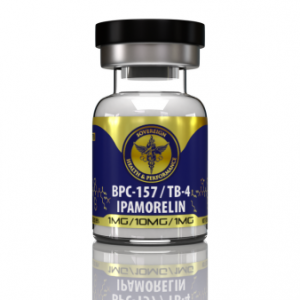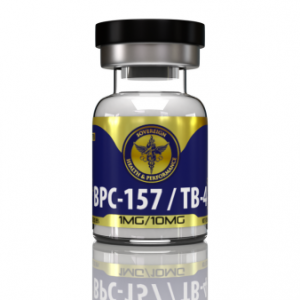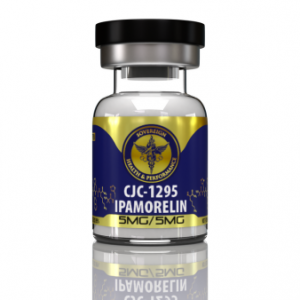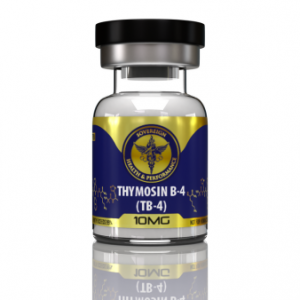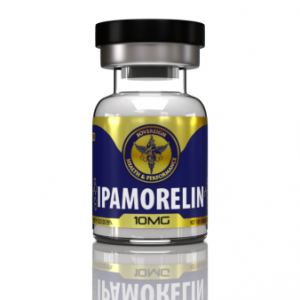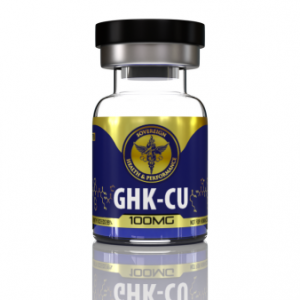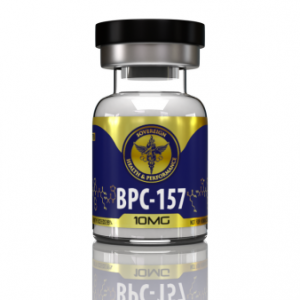How Aging Athletes Face Higher Injury Risks and How Peptides Can Help Turn Back the Clock

Executive Summary
Aging athletes and active older adults are at greater risk of injuries when continuing the physical activities and training routines of their youth. Reduced healing capacity, driven by slower cellular regeneration, diminished blood circulation, and weakened immune function, leads to delayed recovery, accumulated microtears, and an increased likelihood of chronic conditions like tendinopathy or osteoarthritis.
Advances in regenerative medicine offer solutions through therapeutic peptides such as BPC-157, Thymosin Beta-4 (TB-4), GHK-Cu, and growth hormone boosters like Ipamorelin. These peptides restore the body’s ability to heal by promoting faster tissue repair, enhancing collagen production, reducing inflammation, and improving blood flow. This enhanced recovery capacity effectively reverses age-related declines, making the body function more like its younger self.
A hypothetical example of an older runner developing Achilles tendinopathy highlights how accumulated microtears lead to injury. Peptides like BPC-157 and TB-4 accelerate tendon repair and reduce inflammation, while GHK-Cu remodels improperly healed tissue, and Ipamorelin supports systemic recovery. By addressing both acute injuries and chronic conditions, these peptides empower aging athletes to recover efficiently, maintain an active lifestyle, and reduce injury risks.
Here we go!
Aging athletes and active older adults often find themselves grappling with a frustrating reality: engaging in the same physical activities and training routines they once thrived on now leads to more frequent injuries. Reduced healing capacity, driven by slower cellular regeneration, diminished blood circulation, and a weakened immune system, compounds over time. The result is not just delayed recovery but also a heightened risk of injuries that could have been avoided in their younger years. However, therapeutic peptides such as BPC-157, Thymosin Beta-4 (TB-4), GHK-Cu, and growth hormone boosters like Ipamorelin offer a way to restore the body’s healing ability, effectively making it “younger” and more resilient.
One of the most insidious effects of aging is the accumulation of microtears in muscles, tendons, and ligaments. When athletes train, small injuries naturally occur in these tissues as part of the process of strengthening and adaptation.
In younger bodies, these microtears are efficiently repaired, leaving the tissues stronger than before. However, with age, slower cellular regeneration means the same training and volume can result in microtears healing incompletely or improperly. As microtears accumulate, weak spots are created. Over time, these accumulated microtears can lead to significant injuries. For example, an older runner who continues their usual mileage might develop Achilles tendinopathy—a painful and debilitating condition caused by repeated microtrauma and insufficient healing of the tendon.

This delayed healing process is further exacerbated by diminished blood circulation. The body’s ability to deliver oxygen and nutrients to injured tissues declines with age, slowing recovery and leaving areas like tendons and ligaments, which already have limited blood supply, at an even greater disadvantage. Poor circulation also affects muscle recovery, contributing to prolonged soreness and a greater risk of strains or tears during subsequent training sessions. Additionally, joint cartilage, which lacks the capacity for self-repair, becomes increasingly vulnerable to wear and tear, leading to degenerative conditions like osteoarthritis.

This delayed healing process is further exacerbated by diminished blood circulation. The body’s ability to deliver oxygen and nutrients to injured tissues declines with age, slowing recovery and leaving areas like tendons and ligaments, which already have limited blood supply, at an even greater disadvantage. Poor circulation also affects muscle recovery, contributing to prolonged soreness and a greater risk of strains or tears during subsequent training sessions. Additionally, joint cartilage, which lacks the capacity for self-repair, becomes increasingly vulnerable to wear and tear, leading to degenerative conditions like osteoarthritis.
Weakened immune function compounds these issues by disrupting the balance of inflammation needed for proper healing. While some level of inflammation is crucial for initiating repair processes, chronic low-grade inflammation often seen in older adults hampers recovery and creates an environment where injuries become persistent or escalate into chronic conditions. This immune inefficiency also increases susceptibility to infections in wounds, further complicating the healing process.
Research indicates therapeutic peptides offer a promising solution to age-related declines, effectively enhancing the body’s healing and recovery capacity. BPC-157, for instance, has been shown to accelerate healing in muscles, tendons, and ligaments by promoting the formation of new blood vessels and stimulating fibroblasts, which are essential for collagen production. In the case of the hypothetical runner with Achilles tendinopathy, using BPC-157 could speed up tendon repair and reduce inflammation, allowing them to recover more fully and return to training sooner without risking reinjury.

Similarly, Thymosin Beta-4 (TB-4) plays a key role in tissue regeneration. It facilitates cell migration to injury sites and reduces scar tissue formation, ensuring tissues heal with better structural integrity. For the same runner, TB-4 could complement BPC-157 by further reducing inflammation and promoting the repair of damaged tendon fibers, minimizing the risk of chronic issues or reinjury.

Tissue remodeling might seem to be an abstract concept. Take a moment and picture an injury you’ve experienced as a bridge that needs to be repaired. Peptides such as GHK-Cu offer additional benefits by actively remodeling damaged tissue, breaking down improperly healed areas, and stimulating collagen synthesis. This peptide not only helps rebuild stronger, more resilient tissues but also improves blood flow to the injury site. This ensures, for instance, the Achilles tendon from the earlier example receives the oxygen and nutrients it needs for optimal healing. Furthermore, GHK-Cu’s ability to reduce oxidative stress can help counteract cellular damage associated with aging.

Growth hormone secretagogues, such as Ipamorelin and CJC-1295, enhance the systemic recovery process by stimulating the body’s natural production of growth hormone. Growth hormone is vital for protein synthesis, muscle repair, and bone healing. In older athletes, these peptides restore a more youthful recovery capacity, allowing the body to repair microtears and rebuild tissues as efficiently as it did decades earlier. For the aging runner, this could mean faster muscle recovery after intense runs and stronger, healthier connective tissues, reducing the likelihood of further injuries.
The combined use of these peptides can effectively reverse many of the limitations imposed by aging. For example, an older athlete who regularly uses BPC-157 and TB-4 for tissue repair, GHK-Cu for tissue remodeling, and Ipamorelin for systemic recovery might find their body heals so efficiently that they can train at levels comparable to their younger years. This combination not only accelerates recovery from acute injuries but also strengthens tissues, reduces inflammation, and mitigates the effects of accumulated microtrauma, creating a body that is effectively younger in its healing capacity.

Aging athletes don’t have to accept injury and slow recovery as inevitable. By addressing the root causes of reduced healing capacity, therapeutic peptides provide a powerful tool for maintaining an active lifestyle. These advancements in regenerative medicine not only restore the body’s ability to recover but also empower older individuals to continue pushing their limits, reducing injury risks, and enjoying the activities they love for years to come.

Featured Research Peptides
-
 BPC-157 & TB-4 & Ipamorelin Blend$129.00
BPC-157 & TB-4 & Ipamorelin Blend$129.00 -
 BPC-157 & TB-4 Blend$119.00
BPC-157 & TB-4 Blend$119.00 -
 CJC-1295 & Ipamorelin Blend$77.00
CJC-1295 & Ipamorelin Blend$77.00 -
 Thymosin B-4 (TB-4)$98.00
Thymosin B-4 (TB-4)$98.00 -
 Ipamorelin$77.00
Ipamorelin$77.00 -
 GHK-Cu$69.00
GHK-Cu$69.00 -
 CJC-1295 NO DAC$99.00
CJC-1295 NO DAC$99.00 -
 BPC-157$88.00
BPC-157$88.00
References
1. BPC-157 and Tissue Healing
- Sikiric, P., et al. “Stable Gastric Pentadecapeptide BPC 157 and Wound Healing.” Frontiers in Pharmacology, vol. 12, 2021, article 627533.
2. Thymosin Beta-4 in Tissue Regeneration
- Crockford, D., et al. “Thymosin β4: Structure, Function, and Biological Properties Supporting Current and Future Clinical Applications.” Annals of the New York Academy of Sciences, vol. 1194, 2010, pp. 179–189.
3. GHK-Cu and Tissue Remodeling
- Pickart, L., and Margolina, A. “GHK Peptide as a Natural Modulator of Multiple Cellular Pathways in Skin Regeneration.” BioMed Research International, vol. 2018, 2018, article 6303025.
4. Growth Hormone Secretagogues and Aging
- Ghigo, E., et al. “Growth Hormone-Releasing Peptides.” European Journal of Endocrinology, vol. 136, no. 5, 1997, pp. 445–460.
5. Age-Related Decline in Muscle Regeneration
- Charge, S. B., and Rudnicki, M. A. “Cellular and Molecular Regulation of Muscle Regeneration.” Physiological Reviews, vol. 84, no. 1, 2004, pp. 209–238.
6. Impact of Aging on Tendon Healing
- Kjaer, M. “Role of Extracellular Matrix in Adaptation of Tendon and Skeletal Muscle to Mechanical Loading.” Physiological Reviews, vol. 84, no. 2, 2004, pp. 649–698.
7. Diminished Blood Flow and Tissue Repair in Aging
- Rivard, A., et al. “Age-Dependent Impairment of Angiogenesis.” Circulation, vol. 99, no. 1, 1999, pp. 111–120.
8. Immune Function Decline with Age
- Weiskopf, D., et al. “The Aging of the Immune System.” Transplant International, vol. 22, no. 11, 2009, pp. 1041–1050.
9. Inflammation and Aging (“Inflammaging”)
- Franceschi, C., et al. “Inflammaging and Anti-Inflammaging: A Systemic Perspective on Aging and Longevity Emerged from Studies in Humans.” Mechanisms of Ageing and Development, vol. 128, no. 1, 2007, pp. 92–105.
10. Therapeutic Potential of Peptides in Aging
- Malavolta, M., et al. “Potential Use of Metalloproteinase-9 and Tissue Inhibitor of Metalloproteinases-1 as Biomarkers of Zinc Status: A Review.” Biogerontology, vol. 11, no. 1, 2010, pp. 119–129.


